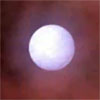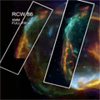CXC Home | Search | Help | Image Use Policy | Latest Images | Privacy | Accessibility | Glossary | Q&A
Animation of a Massive Star Explosion
Quicktime MPEG
When a massive star explodes, it creates a shell of hot gas that glows brightly in X-rays. This animation shows this process and depicts the stellar debris that Chandra is able to observe, revealing the dynamics of the explosion.
[Runtime: 0:15]
(Animation: NASA/CXC/A.Hobart)
Quicktime MPEG
When a massive star explodes, it creates a shell of hot gas that glows brightly in X-rays. This animation shows this process and depicts the stellar debris that Chandra is able to observe, revealing the dynamics of the explosion.
[Runtime: 0:15]
(Animation: NASA/CXC/A.Hobart)
RCW 86 Zoom Animation
Quicktime MPEG
Recent observations have uncovered evidence that helps to confirm the identification of the remains of one of the earliest stellar explosions recorded by humans. The new study, using data from NASA's Chandra X-ray Observatory and European Space Agency's XMM-Newton Observatory, shows that the supernova remnant RCW 86 is likely a supernova observed by Chinese astronomers in 185 A.D.
[Runtime: 0:15]
(Credit: Chandra: NASA/CXC/Univ. of Utrecht/J.Vink et al. XMM-Newton: ESA/Univ. of Utrecht/J.Vink et al.)
Quicktime MPEG
Recent observations have uncovered evidence that helps to confirm the identification of the remains of one of the earliest stellar explosions recorded by humans. The new study, using data from NASA's Chandra X-ray Observatory and European Space Agency's XMM-Newton Observatory, shows that the supernova remnant RCW 86 is likely a supernova observed by Chinese astronomers in 185 A.D.
[Runtime: 0:15]
(Credit: Chandra: NASA/CXC/Univ. of Utrecht/J.Vink et al. XMM-Newton: ESA/Univ. of Utrecht/J.Vink et al.)
Return to RCW 86 (18 Sep 06)




